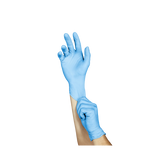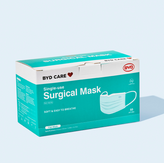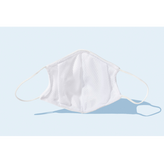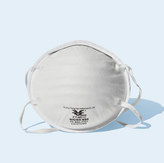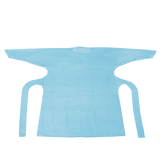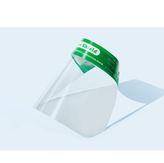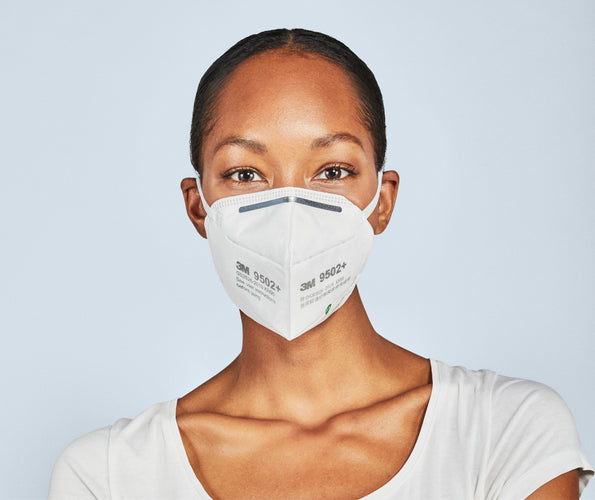N95s and KN95s - A History
Though N95 masks are the talk of the town, there's been a lot of confusion in the market about what differentiates these models from others. (Hint: N95 masks, respirators, "filtering facepiece respirators," or FFRs all have the same purpose). In this three-part series, we’ll break down the differences between N95s and KN95s, why not all masks are created equal, and how to recognize each type based on their design and fit.
Once COVID-19 cases in the United States rose in March, it was evident that healthcare workers required more N95s. N95s are called such because they filter out 95% of particulates in the air, which is important when viral transmission is airborne. Nurses, doctors, EMTs, and others on the healthcare frontlines typically use a specific subcategory of N95s called "surgical N95s.” In addition to filtering 95% of particulates, surgical N95s are fluid-resistant to 160 mmHg. The total supply of these masks is limited since pre-pandemic demand typically centered on specific use cases such as for surgery with an infectious patient, or procedures where hazardous gases are being emitted. Few anticipated a scenario where practically every doctor or nurse treating patients needed to wear one and wear it all day, every day.
|
Did you know? N95 The name "N95" comes from the fact that they filter out 95% of particulates in the air. |
Faced with this shortage, the Food and Drug Administration initially authorized the emergency use of standard N95 masks (not surgical N95s), thereby broadening the number of masks available for use in healthcare settings. Even with this expansion, the shortage persisted, prompting the FDA to expand its Emergency Use Authorization to permit European, Japanese, Korean, Australian, Mexican, and Brazilian standards in healthcare settings. Notably, they excluded Chinese-regulated KN95 masks, which make up the majority of the market’s supply.
Why does China produce so many masks? First, supply — there are hundreds of mask manufacturers in China. China is an advanced manufacturing country that has a fully integrated supply chain for producing masks quickly and at massive scale. Second, demand — China encountered high regional demand for masks during the SARS outbreak of 2002-2004. The country also has ongoing air quality challenges (imagine California wildfire air quality problems every day) that adversely impact the majority of the population, as most people live in dense cities. The combination of these realities means that a great deal of consumers use filtering masks. While widespread use of N95s was previously unheard of in the U.S., KN95s have been a consumer product in Asia for a decade.
As the pandemic advanced throughout the spring, the FDA noted a need to find more respirators and quickly. The agency permitted KN95s, growing the "Appendix A" list of approved vendors to over 80. This was soon limited when it was learned that some manufacturers’ masks didn't actually filter 95% of particles. On May 7, the EUA reduced the approved vendors list to 14 manufacturers and instituted an enhanced review process.
Today, there are 150 manufacturers on the EUA list, but unfortunately the dramatic culling of the KN95 list in May greatly affected the perception of KN95s in the U.S. market. Clinical, commercial, and consumer feedback on KN95s has also been mixed.

Differences in Respirators, Explained
So, what is a KN95, and how does it compare to an N95? They differ in two ways — regulation (and therefore quality) and design.
Regulation
“KN95” simply means that the respirator is regulated by the Chinese FDA. On the face of it, U.S. (N95) and Chinese (KN95) technical standards are nearly identical. 3M created a guide comparing standards between the major countries –– the first column is the U.S. standard, and the third column is the Chinese standard. You’ll see that, based on specs, they are certainly more similar than they are different.
The respirators do differ in one key respect –– ongoing quality control, which is less rigorous under the KN95 standard. Some more primary documents.
- Here's the full text of the GB2626 regulation (in Chinese), which was updated in 2019, effective July 1, 2020, principally with additional regulations about N versus P respirators. Of note are sections 5 (technical standards) and 6 (test methods). KN95 is the 95% filtering standard within the GB2626-2009 (recently updated to -2019) standard, which sets out the technical and test standards for being designated a compliant non-powered air-purifying particle respirator. GB2626 also regulates KN90, KN99, and oil filtering ("P") respirators.
- Here's a summary of what it takes to get NIOSH certification.
|
Did you know? KN95 "KN95" simply means that the respirator is regulated by the Chinese FDA. |
The devil is in the details here. The U.S. NIOSH / CDC has a much more comprehensive factory-level review process, ongoing audit, and deep-dive into quality control processes. Whereas in China, a KN95 designation is easier to claim with a single conforming test report and a few other reviews. It’s also important to remember that not all testing agencies are created equal!
Basically, the N95 is more tightly regulated, while KN95 has been fairly loosely regulated. This means that the quality variance is narrow among N95-certified products and wide among KN95 products. Of course, there are some excellent KN95s (such as the ones 3M China makes), but there are also garbage, sandpapery KN95s, whose makers used good meltblown materials on test report samples and then reverted to lower-quality raw materials in the actual manufacturing process. In other words, it's entirely possible for a mask to be eligible for KN95 labeling per China's regulatory process, yet also be an inferior product. Certainly there are also straight-up counterfeit KN95 as well (though to that end, there are also counterfeit N95s).
The bottom line is that it is difficult to tell a great KN95 from an inferior KN95 without reviewing certifications, samples, and testing samples. This is mostly an indictment of the Chinese KN95 certification process rather than a comment on individual manufacturers. The lack of comprehensive factory, quality, and supply chain review of KN95 manufacturing is what creates this confusion in the market, allowing marginal actors to flourish, making for an oversupply of goods with unknowable quality, and ultimately damaging trust in Chinese regulators.
Design and Fit
The easiest way to tell KN95s and N95s apart is by how they look and feel. Most KN95s have a vertical flat fold and ear loops. Distinct from this, most Americans identify N95s by their cup shape and headband straps. Design differences between N95s and KN95s arise mainly from different use cases and face shapes across Asian and Western markets.
Fit is a big factor in selecting an N95. Even if the facepiece filters perfectly as intended, gaps between the mask and the wearer's face mean the wearer could end up breathing quite a bit of unfiltered air. Wearing an ill-fitting mask is like closing a door, then opening a window.
The key to finding the right mask is making sure that you select a design that works with your specific face type. Consumers prefer flat-fold, ear-loop masks because they are easier to put on, take off, and put in your pocket. Cup-shaped N95s are prevalent in Western markets and are often preferred by those with a medium to wide face frame and a higher nasal bridge. Vertical fold N95s fit well on more petite or slender face shapes and can accomodate lower nasal bridges. Since the COVID-19 pandemic began, more N95s have come to market, meaning it’s easier than ever to find a model that will fit your face.
Keeping an eye to the future, we are now seeing improved innovation in the mask market. The use case for N95s has changed - now a healthcare worker is expected to wear it all day instead of a couple hours at a time. That means the product needs to change. Now we are seeing mask models with adjustable headbands and with higher breathability - key for reducing fatigue at the end of a long shift.
So are KN95s a bad choice for healthcare practitioners? Not necessarily. They can be a very good, and economical, choice if you have the right one. By “right one” we mean one that is EUA-approved and from a reputable supplier and has a good fit for your face. Also, if the mask is to be used in a medical setting, a headband KN95 is recommended over an earloop KN95 for a better fit. If you as a buyer are comfortable with the provenance and quality of the product, then KN95s can be the best choice from a cost perspective. That said, given the aforementioned unfortunate marketing and distrust around many KN95s, we do not anticipate the hospital community embracing this product as a first choice. It remains an excellent option for those who may not be able to budget for substantial PPE increases, such as dental, long term care, and construction.
In conclusion, KN95s and N95s are both particle respirators, but indeed they are different. The primary difference is the mask’s origin (K = Chinese N95) and the regulation standard that each follows. Mirroring this technical difference is an even larger market preference difference where N95s are substantially preferred by the medical community largely due to comfort with what they are familiar with pre-covid (N95s from 3M, Honeywell, etc). Our recommendation is that in any case, it’s important to find a mask that is the right fit and from a supplier you trust.



